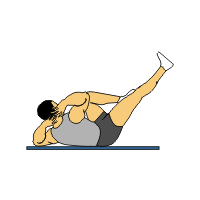'
"People create their own success by learning what they need to learn and then by practicing it until they become proficient at it."
'
- Brian Tracy
There’s a popular saying ‘if you can’t measure it, you can’t manage it.’
This saying is especially true for your eating habits.
I thought I was a pretty healthy eater… I drink lots of water… I eat my fruits and vegetables... I try to minimize my junk food (gotta have my chocolate though).
To prepare for this article, I decided to record my food intake for a week to show everyone what a ‘healthy eater’ looked like (lol)
Boy was I in for a shocker! I learned that I eat when I’m stressed; when I want to procrastinate; and when my son leaves food on his plate. (flashbacks of my mom reminding me of the starving children in Africa… I never did get the connection). I also learned that I eat faster than the speed of light and lastly, that I don’t particularly care for writing down my food intake. As challenging as it was, I have learned some very valuable lessons from this exercise that I have incorporated into my ‘what I thought was a healthy’ meal plan.
If you want to be successful in your weight loss efforts-- keep a food journal. It is an excellent way to help you learn about your eating habits, understand your triggers and help you identify why you are making certain food choices.
Enjoy the newsletter!

Cathy Morenzie
Jump to ... (Hide page index)
Feature Article
Food Journaling
What is a Food Journal?
A food journal is simply a diary or record of all the foods that you consume on a daily basis. To get an even better understanding of your eating habits, I recommend you also record your water consumption, your moods when you are eating, the company you are with and the location you are in. Do you eat when you are happy, sad, bored, stressed or frustrated? You might begin to see patterns about yourself that you may not have realized. A food journal can be done for a week, months or on an ongoing basis.
Why Use a Food Journal?
Journaling helps you see in black and white why you may not be reaching your goals. People often say, ‘I don’t eat that much,’ until they see their own food journals and realize that they have been underestimating their food intake. Often just knowing that someone else is going to be looking at what you eat is enough to motivate some people to make better food choices. Food journaling also takes all of the guess work out of trying to figure out just how many calories you've consumed.
I like to take the food journal one step farther and use it as a basis for a healthy meal plan. With some modifications, you can learn how to transform an unhealthy meal into a nutritious, healthy balanced meal. Once you get into the habit of recording, you can actually put together your own personal healthy cookbook consisting of the foods you enjoy and feel confident knowing that they are part of your healthy eating plan.
To obtain the best results with your food journal:
- Be honest with yourself
- Try to keep your journal in a convenient place( posted on the fridge, in your day-timer or beside your bed)
- Try to record when you eat instead of trying to remember back a full day or more
- Include tasting and nibbling—those calories add up
Although it may seem time consuming, learning how to manage your weight by keeping a record of your food intake and you will save a lot of time, money and frustration.
Nutrition Tip of the week
Tomatoes and Apples:
A new study suggests that apples and tomatoes may help prevent respiratory disease.
Researchers at the University of Nottingham in the United Kingdom studied 2,633 adults in 1991 and again in 2000 and found a link between the intake of apples and tomatoes and the subjects' respiratory health.
Those who ate five apples or three tomatoes per week scored highest on a test that measured the amount of air a person can expel from the lungs in one second.
Lead researcher Emma Broadfield and colleagues theorize that the high levels of antioxidants in these two foods may have a beneficial effect on lung function.
Source: 97th Annual Meeting of the American Thoracic Society, May, 20, 2001, San Francisco, Calif.
Exercise of the Week

Exercise Description:
Muscles Worked:
Instructions:
1. Start by lying on your back with your hands behind your back and thighs bent 90 degrees at your hip.
2. Simultaneously curl your right shoulder and left knee up towards the center of your body until your elbow and knee touch. Return to the starting position and repeat with the other side.
3. Continuously repeat this pattern for as long as you can maintain the correct position. ( 5-10 times per side).

About Cathy Morenzie
Cathy Morenzie is a certified personal fitness trainer, fitness instructor, and Pilates instructor. She specializes in providing creative fitness solutions for people on the go. She has trained thousands of clients and trainers over the last 15 years. For more FREE tips like these, contact us or call 416-410-8517 to schedule your complimentary session. Can't fit personal training sessions into your schedule, no problem - try our online personal training and receive the benefits of one-on-one personal training at a fraction of the cost.